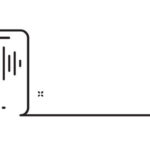Ringless Voicemail: What Is It?
A user or organization can send a voicemail message straight to a recipient’s voicemail box utilizing ringless voicemail technology, which eliminates the need for the receiver to make a call or set their phone to ring. Businesses frequently employ this service for marketing or promotional campaigns since they believe it to be less invasive than making a regular phone call.
What Makes Me Concerned?
Salespeople are no longer as important to people as they once were. In fact, compared to a few years ago, buyers are less reliant on sales during the decision-making process, according to 57% of salespeople. Are you still undecided? What the experts have to say is as follows:
Representatives can leave up to 150 voicemails in a single day, according to Revenue.io, which details how voicemail drop systems are cleverly built to revolutionize time management for representatives. For a solo representative, this comes out to about 25 hours per month at an average of 30 seconds per voicemail; for a team of 10 representatives, that number rises to 250 hours. Voicemail drop solutions provide a way to recover a significant portion of this wasted time.
According to HubSpot, one of the hardest things for salespeople to do is manage their time effectively. Managing many things at once can become too much to handle. How can they efficiently prioritize tasks and increase their productivity, is the question. Eliminating administrative work is the most important thing on the list.
Numerous sectors may make use of ringless voicemail in different ways. Here are five strategies for using ringless voicemails to grow your company:
Marketing & Promotions: Directly leave customized voicemails for prospective or current clients with information about new items, exclusive deals, or impending sales.
Payment Reminders: Organizations that manage billing, such as utilities or financial institutions, can notify clients of impending deadlines or overdue payments.
Appointment Confirmations: Reminders or confirmations of forthcoming appointments can be sent by salons, medical clinics, and other service-oriented enterprises.
Political campaigning: Advocacy organizations and politicians can disseminate their views, prompt people to cast their ballots, or offer details on upcoming town halls and local events.
Operational Communications: Internal communications that include informing staff members of impending training, scheduling modifications, or significant announcements.
Alright, I’m intrigued. How Does It Operate?
In general, the procedure operates as follows:
1. Connectivity with Voicemail Server: The service provider connects straight to the recipient’s voicemail server.
2. Delivery of the Recorded Message: The prerecorded message is sent directly to the voicemail system, bypassing the recipient’s phone line.
3. notice: Even if the phone never rang, the recipient’s phone will usually display a notice of a missed call or a new voicemail.
Using the services of a ringless voicemail provider is one approach to go about this (see below).
What are the Benefits and Drawbacks?
“One of the hardest skills for salespeople to learn is time management. They always have multiple tasks vying for their attention at once. How do they prioritize and make the most of their time?”
Having ringless voicemail has several benefits.
Less Intrusive: It might be argued that the phone is less disruptive because it doesn’t ring.
It’s Effective: Ringless voicemails are a great way to raise lead awareness, especially when used in conjunction with other outreach initiatives. Many marketers and salespeople have discovered that recipients are more inclined to listen to a voicemail than to answer an unknown call.
Higher Listen Rates: Bearworks’ LLM-powered AI-voicemail technology allows parallel dialed voicemail drops to incorporate personalized details, making messages feel more engaging and tailored for recipients. Your leads will listen to your voicemails on their own time, possibly more than once.
Voicemail drops are a great tool for business development teams since they may reach a big number of contacts quickly and reliably convey your message, reducing the possibility of communication failures. They are also scalable.
Compliance: Voicemail drops can support the upkeep of moral and lawful communication practices when they are used sensibly and in accordance with the law.
The following are some issues and critiques of ringless voicemail:
Regulation and Legality: Because of its complex legal background, ringless voicemails can be contentious. If you’re thinking about using one, make sure you abide by TCPA requirements.
Limited Interaction: Voicemail drops can be problematic for recipients who wish to have a discussion since they do not provide instantaneous two-way communication.
Relevance of Message: Because voicemail drops are pre-recorded, care must be taken to make sure the message is still appropriate for the receiver in their present situation.
Risk of Overuse: Unsolicited voicemails might be perceived by some as bothersome or invasive, similar to email spam or telemarketing calls. If voicemail drops are used excessively, the recipients may get overloaded with automated messages, which would reduce the approach’s novelty and efficacy.
Initial Learning Curve: Your sales development team may need to make some adjustments in order to generate compelling and successful pre-recorded messages when deploying voicemail drops, just as with any new technology or procedure.
Understanding local laws and regulations is crucial if you’re thinking about utilizing ringless voicemail for business. Make sure you’re in compliance with any applicable rules or regulations.
Why is the TCPA important to me?
The Telephone Consumer Protection Act (TCPA) is a law that was passed in the United States in 1991 that restricts telemarketing activities, such as unsolicited faxes, auto-dialing, and pre-recorded messages. It requires telemarketers to keep “do-not-call” lists, forbids robocalls to cell phones without prior consent, requires the transmission of Caller ID information, and outlaws unsolicited fax advertising. Violations of the TCPA can result in substantial fines and legal ramifications—up to $500 for each infraction—or enforcement actions from the Federal Communications Commission. One crucial consideration when it comes to ringless voicemail is whether the person you are calling has given their consent.
Previous Assent
“Prior consent” means getting someone’s express consent before doing something. When it comes to the TCPA and communications, this usually means getting someone’s consent before making certain kinds of calls or sending out marketing messages. Here are some instances of how prior consent can be obtained:
1. Signed Agreement: A person signs a paper or electronic form indicating explicitly that he or she consents to receive calls, messages, or other communications from a business. The document may have a checkbox or special area that the signatory must mark.
2. Online Opt-In: A user selects a box on a website or app indicating that they consent to receiving marketing messages or calls; this box shouldn’t be checked in advance.
3. Oral Consent: During a phone conversation that is recorded, the caller expressly asks the subject whether they are willing to receive messages from them in the future, and the subject responds vocally.
4. Text-to-Join Campaigns: A person texts a designated number to express their want to receive communications from the business; this might be seen as giving consent.
5. Sign-ups for Events or Trade Shows: During an event, participants may be asked to click a box indicating that they are okay with being contacted later and to enter their contact information.
6. Purchase or Transaction: After completing a purchase, a customer may be offered the choice to receive offers, updates, or follow-ups from the business. In this case, the client’s consent should be expressly given rather than deemed to have been granted by virtue of the transaction.
Q&A: An Extensive Look at Marketing for Ringless Voicemails
1. Is ringless voicemail appropriate for all target groups and businesses?
Not always.
B2B vs. B2C: Ringless voicemail excels in B2B outreach because it enables professionals to receive brief, targeted messages during their workday. As for B2C audiences, think about the product or service. While straightforward promotions may be effective, more involved approaches (such as visiting a website) may be necessary for complex offerings.
Message Complexity: Try not to jam too much information into a brief voicemail. Instead, concentrate on one main point or advantage, and stimulate curiosity about further information (such as visiting a website).
Audience Preferences: Find out whether your target population is open to voicemail marketing. Older demographics, who are more used to monitoring voicemails, may find it more successful than younger demographics.
2. How can I monitor a ringless voicemail campaign’s effectiveness?
Advanced Metrics: To gain insight into message engagement and optimal delivery times, go beyond simple delivery rates. Certain platforms provide features like listen-through rates (the proportion of receivers that listened to the full message) and location data (should they wish to disclose it).
Integrations: To analyze voicemail analytics in addition to other marketing channels for a comprehensive picture of campaign performance, use a provider that connects with your CRM or marketing automation platform.
Call-to-Action Optimization: Try a variety of CTAs (such as “Call us today to learn more” vs “Visit our website for a free trial”) and see which ones elicit the most desirable responses.
3. What kind of material may I add in a voicemail that doesn’t ring?
Service-unique restrictions: Character or word count restrictions may differ by service provider; always check their unique requirements. General recommendations: make it succinct, professional, and helpful.
Legal Compliance: Don’t use any misleading or deceptive language in your voicemail message, and make sure it complies with applicable telemarketing legislation such as the TCPA (US) or comparable restrictions in your target markets.
Disclosures: Provide a clear opt-out option (e.g., “Reply STOP to unsubscribe”) and disclaimers regarding the commercial nature of the message.
4. To get the most engagement, when should you send out ringless voicemails?
Target Audience Research: Take into account the time zones and work hours of your target audience. While weekdays during business hours may be a good place to start, A/B testing various delivery times will help identify the best window for interaction.
Avoid Being Intrusive: Sending voicemails too early in the morning, too late at night, or on the weekends is okay as long as your audience is expecting communication outside of usual work hours.
5. What distinguishes standard voicemail drops sent following a call from ringless voicemails?
Guaranteed Delivery: Ringless voicemails avoid all ringing and are guaranteed to appear in the receiver’s voicemail mailbox. Conventional voicemails sent after a call may be missed if the recipient doesn’t respond or has voicemail deactivated.
Perception: Although ringless voicemails don’t interfere with users’ activities, some people may find traditional voicemails more bothersome. That being said, a well-written ringless voicemail message can still be seen favorably, particularly if it provides useful information.
6. Is it possible to combine marketing automation solutions with ringless voicemail?
Streamlined Workflows: You can develop focused ringless voicemail campaigns, oversee them alongside other marketing efforts, and easily monitor outcomes from a single, centralized platform thanks to integrations with marketing automation solutions.
Segmentation and Personalization: To create a more memorable experience, use the consumer data that is already available to tailor ringless voicemails based on prior encounters, interests, or demographics.
Automated Follow-Ups: To strengthen your message and boost conversion rates, combine your ringless voicemail campaign with automated email or social media follow-ups.
7. When employing ringless voicemail for overseas marketing campaigns, are there any international rules to take into account?
Global Compliance: While the TCPA is applicable in the United States, other nations may have laws that are similar but go by other names regarding telemarketing calls, including ringless voicemails.
Hiring a specialist: For sophisticated global marketing initiatives, consider hiring a marketing compliance specialist to ensure that your ringless voicemail campaigns comply with all pertinent foreign standards and avoid potential legal difficulties.
8. What other marketing techniques may I employ with contacts who haven’t given their permission to receive ringless voicemails?
Create a thorough marketing plan that makes use of several channels. For example, you may contact people who haven’t agreed to receive ringless voicemails by using email marketing, social media advertising, or targeted internet advertising platforms.
Targeting and Segmentation: Make use of your marketing automation software to focus on the members of your audience who have chosen to receive certain communications.
information marketing: Provide insightful and useful information (blog posts, white papers, etc.) that engages and naturally draws in your target audience.
9. How is recipient information handled in ringless voicemail campaigns? Are there any privacy concerns?
Transparency is Crucial: Look for a comprehensive privacy policy that describes how recipient information is handled, and select a ringless voicemail service provider that is open and honest about its data collecting, storage, and usage methods.
Regulation Compliance: Verify that the service complies with applicable data privacy laws, such as the CCPA (California) or GDPR (Europe), based on the target markets you are targeting. These laws specify rules around data security, user permission, and data gathering.
Mechanisms for Opting Out: The service must offer recipients simple and unambiguous ways to opt-out. For example, they can reply with the word “STOP” or go to a specified page on the unsubscribe website.


